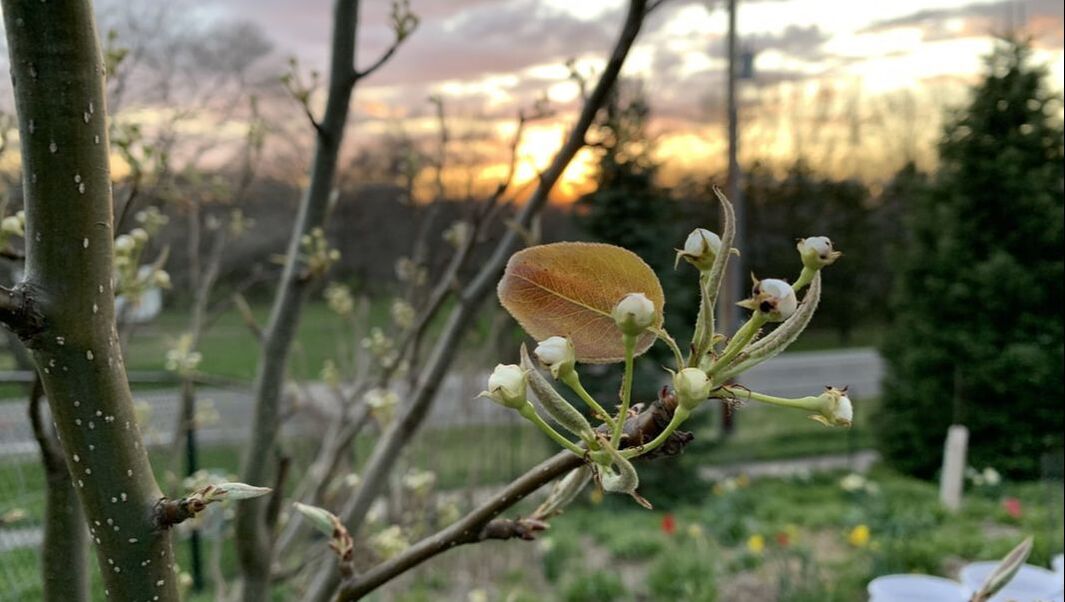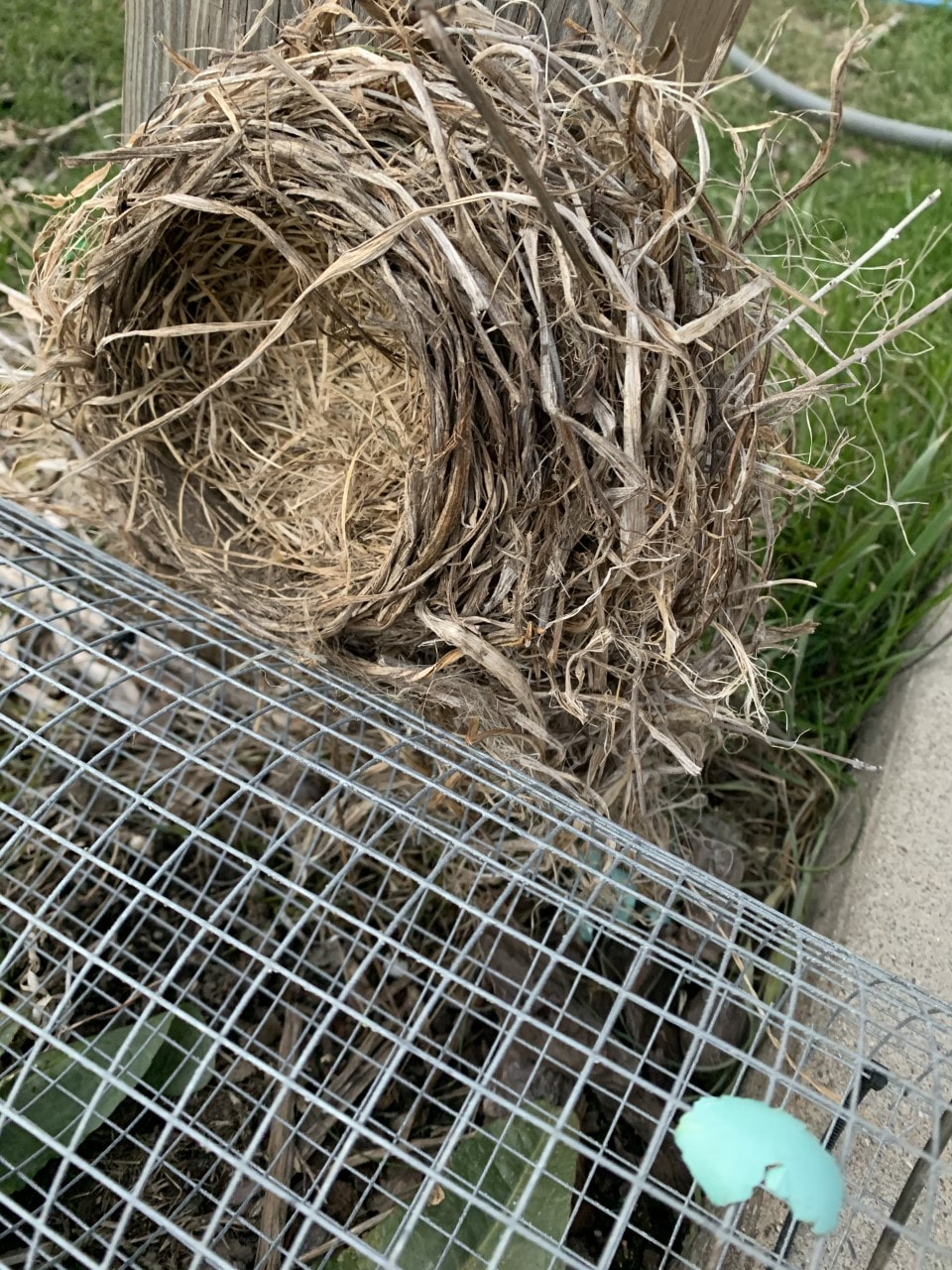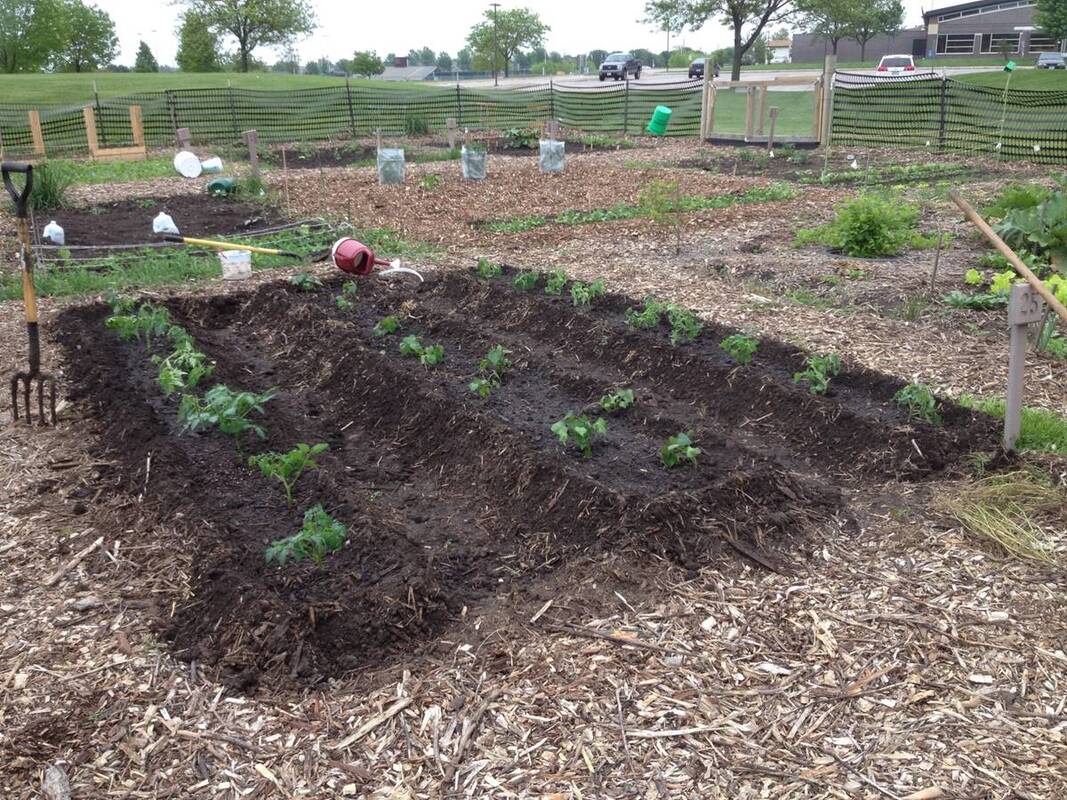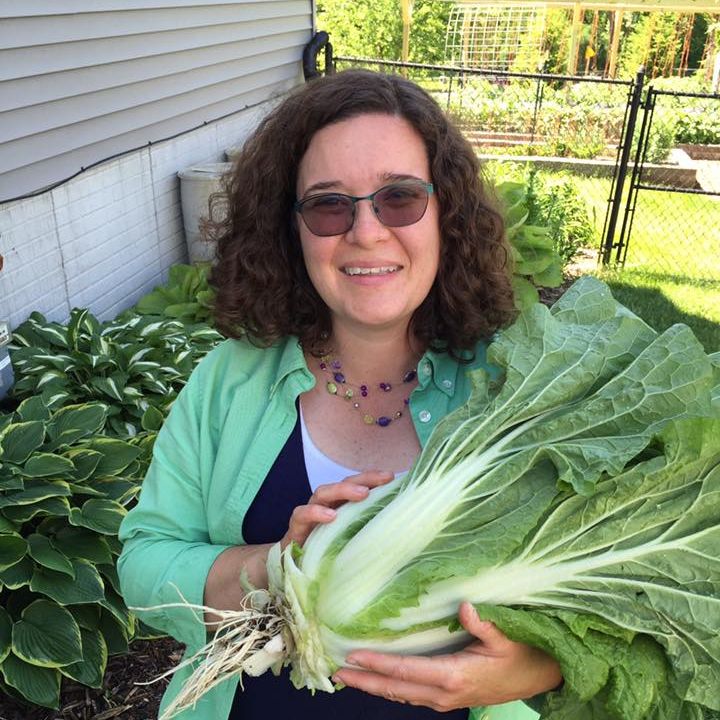|
Don't let the pretty flowers and greening grass fool you, early spring is a rollercoaster event. There are unexpected freezes, snow, rain, and ice. There are sunny warm and windy days too. We keep what I affectionately call "farm hours" this time of year. Farm hours is that time of year where you work not until quitting time, but until the job gets done. Usually there is more work to do than can reasonably fit in a 24 hour period. I'm unusually grateful for a long hot shower after a hard day in the dirt. Steven gets up many nights in April somewhere between 1-2 am to start or restart the propane heaters in the greenhouses. It has been a challenging week. The high winds earlier this week made us rethink the structure of the in-the-garden greenhouse. The design was for a mythical somewhere that never gets wind at more than 10 mph. We ended up needing to frame everything in and screw everything down to keep the greenhouse from flying away. The propane tanks needed to be filled, but the store we get propane from was having problems of their own. Already short on propane, we found that we were also down our newest heater which stopped lighting as well as and propane hose when the thermal safety bushing cracked and fell off. We made do with some electric heaters for one night, but they tripped a breaker at 2:30 am and it took Steven some time to get everything back on and warm. He bought another propane heater yesterday, and the forecast has warmed so that we haven't needed propane for a few nights, but we always have to stay alert. I get the daytime hours. Temperatures that get too low at night switch to temperatures that can get too high during the day. A nice sunny 60 degree day can turn into a 100 degree oven in the greenhouse. I watch the thermostats, opening and closing windows and doors, trying to keep everything at a happy temperature. With plants stuffed into the aisles and under the lights downstairs, and strawberries everywhere, it takes some care to make sure all the plants get the attention they need. The plants however, are blissfully unaware of all the drama. They keep growing confident that we have everything under control. They are growing at an accelerating pace and will be ready for pick up as early as Friday. I can hear you thinking that this all sounds like work - long hours, sleepless nights, dirt everywhere. We have reached a point in our spring projects where even we start to ask ourselves if this is all worth it. Don't worry, it is. But I think it's important to remember that everything that is good and worthwhile to do has moments where you have to struggle. For example, my girls set goals to get up and exercise early, so yesterday they did a Jillian Michael's workout. I love hearing her give encouragement at that moment of fatigue where you are thinking of stopping. It's almost like she can tell exactly where you are thinking of quitting. Cheerfully, but firmly she encouraged them to the end of the workout, where she congratulated them on a job well done and promised that if they were diligent and worked hard amazing things would happen. I am a big fan of hard work, but sometimes even diligent effort is not enough. A pair of young robins built a nest under my deck again this year. I try to tell them that it is not a successful spot, but they are undeterred. The wind caught their nest and it crashed to the ground eggs and all. They will build again, this time in a more secure place. Where you build your nest matters. It is discouraging to do all that hard work only to find that a small wind can dislodge everything you worked on. Gardening is like nest building, What seems like a reasonably straightforward task has many details that if not attended to can lead to disaster. Here are some common April garden mistakes. If you can avoid these, your chances of success and enjoyment in gardening go way up! 1. Planting too early. Everyone is anxious to get growing in the spring. With the pandemic we have seen a big increase in people interested in growing their own food. Planting as soon as possible seems like the fastest way to food. Our average last frost date in central Iowa is around April 26th, but the "safe time" where you are very unlikely to see another frost for the season is closer to May 9th. Even if it doesn't freeze again this year, peppers and tomatoes and squash really do not like to grow at temperatures less than 55 degrees, and they don't have jackets to put on when they feel cold. The old wisdom is to wait until Mother's Day to plant warm season vegetables like tomatoes and peppers. This year Mother's day is May 10th, that's a great time to plant. The weather this year looks like it will be warm between now and then, but be ready to cover tender crops if you put them out early and the temperature drops. Add 10 degrees of heat for squash and melons eggplant and other warm season plants. They like to be warm. There is plenty of time for everything you want to grow there is no worry at this point. Remember that daytime temps are nice, but your plants are sleeping outside all night. Look for a good forecast where the overnight temperatures stay over 50 degrees at night and there is not too much rain. Read "Can I Plant Tomatoes and Peppers Now?" for more details. 2. Knowing what to start from seed and what to buy as plants. When you buy tomato, herb and pepper, and onion seedlings to plant in your garden, what you are really buying is time. Yes, you can start them from seed May 10th, but you will be a good two months behind my seedlings that I planted in March. To maximize the amount of food we get from the garden, I always start these seeds early inside or buy them. Rosemary can take more than 200 days to grow from seed to harvest. We only have about 160 frost free days here. I always buy a plant. On the other hand, lettuce, peas, carrots, beets, and beans, either do not like being transplanted or grow quickly from seeds. Can you transplant them, yes, does it save you money or time, not really. Things like squash and melons fall into a grey area. They are easy enough to start from seeds, but getting a little jump on the season is nice as you can get a harvest before the insects try to take over, and getting a headstart on long season melons like watermelons is nice too. If you are on a tight budget, save your money for those plants that take the longest to grow, or that will give you a much bigger harvest if planted early. That would be peppers, tomatoes, onions, and some herbs. Some herbs like tarragon, thyme, chives, sage, and oregano are perennial here, so you can plant them once and have them come back next year. 3. Starting seeds indoors too early or too late without enough light. Lots of people want to know if it is too late to start seeds now. That depends on your goals and your budget. Ideally things like peppers and tomatoes would be started 6-8 weeks before the last frost. That is about the middle of March. We start ours a little earlier because I have a great set up and greenhouses, and I really like being able to eat fresh ripe tomatoes at the end June instead of the beginning of August. Starting them now is better than later, but you'll be even further ahead to buy a plant that was started a month ago. I see lots of pictures of sad spindly seedlings grown inside by anxious gardeners. You need lots of light to start seeds well. Without light and heat, and a breeze, seeds will grow tall and thin reaching for light they can't find, and the damp soil is prone to molding without good airflow. It is discouraging, and these etiolated plants have a hard time transplanting outdoors. Don't give up! Starting seeds is a very good thing, but to do it well, you need enough time, good light, heat, and airflow. If you don't have the setup for that and haven't started yet this year, just buy good tomato and pepper starts and plant the rest as seeds. For more tips on starting seeds read seedling-starting-strategies.html on our blog. 4. Growing stuff your family won't eat. I love to try new things. I like variety. My family is not that adventurous. We recently did a minimal spending pantry challenge. One of the things that I learned is that we didn't eat stuff we don't like. Not even when it was all our budget offered. During a time of stress kids don't like to try new foods. Parents don't either. I know that the pictures of full gardens look amazing. The colors and shapes. Harvest bounty is amazing. But if you have limited time, space, money, or energy, focus on what your family likes. Don't feel obligated to grow tomatoes just because everyone else does if your family won't eat them. There are hundreds of other options. 5. New garden troubles. If you are new to gardening this year, you might not even have a garden space picked out or prepared. Here is my advice. Pick a good sunny fairly level spot that is not in the low spot of your yard where it floods when it rains. You don't need fancy or expensive garden boxes. Our first garden was just a patch of dirt. That gets muddy, but it works. We used upcycled deck boards that we got free off Craigslist for another garden. That worked too, but we could have used some topsoil or compost. In the community garden we just have a 10x15 plot of land that we rake up into raised soil beds. In our formal garden now we have blocks. Things we have learned. Raised garden beds work best here in Iowa where we get lots of rain. Compost is great and inexpensive. We can get a ton (literally) of compost from the Metro Waste Authority at the landfill for $10. Before we had a trailer, we just rented one from Uhaul. We also have gotten topsoil from Terry's Services. You can pick it up, or he can deliver it. He's busy, so plan ahead and watch the weather. Wet soil is too heavy to haul. We used to rip up all the grass with a rototiller, but you really don't need to. Just lay down a nice thick overlapping layer of cardboard where you want the garden, and then put the topsoil and compost over that. If you are in a hurry, you can spray the grass with Roundup wait a few days, and then cover with cardboard to speed up the process. The cardboard blocks light from the grass, and eventually just composts with the grass into the soil. Ideally you would do this in the fall so the grass would have time to break down, but I'll be making new first year garden beds to plant in this year as soon as the greenhouses come down. We'll try to put 8-12 inches of compost mixed with topsoil down where we plant to plant. It will work just fine. There is plenty of time. 6. Don't Give Up! Just like my young robin friends, you will probably have some setbacks. We still have troubles every year. Not enough rain, too much rain, rabbits, insects, hail, a pet dog who loves to sleep in the strawberries like my Sam did. There are too many possibilities to list. When one of these setbacks come to you, have your moment, but keep going! Remember to do the small things. Great things can happen with such small efforts. Be out in your garden for a few minutes each day. Pick weeds early and often, water regularly. The great thing about gardening is that living things want to grow! They will give you 100% effort every time. The sun provides all the light and heat you need, and there is plenty of fresh air outside, so growing outside is not nearly as hard as growing inside plants. Here is central Iowa we usually get a nice amount of rain too. You can do this! Just do the very best you can each day to do the basic things, and you will find in time that these small and simple things, combined with daily effort bring a very rewarding harvest. You will be amazed at what you can accomplish! Let's get growing!
Comments are closed.
|
Archives
April 2022
Categories
All
|




 RSS Feed
RSS Feed